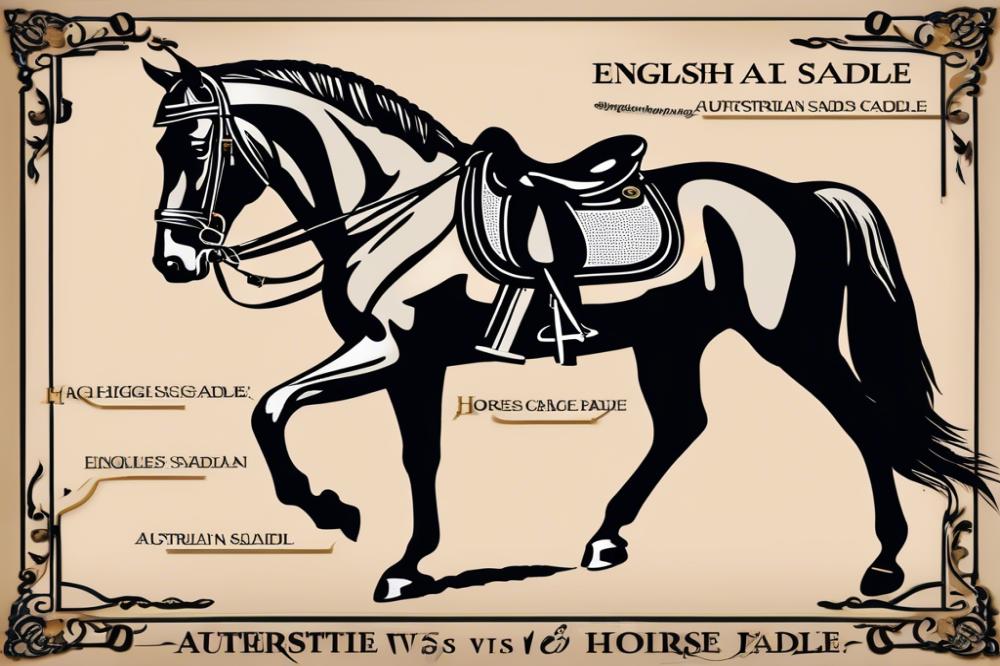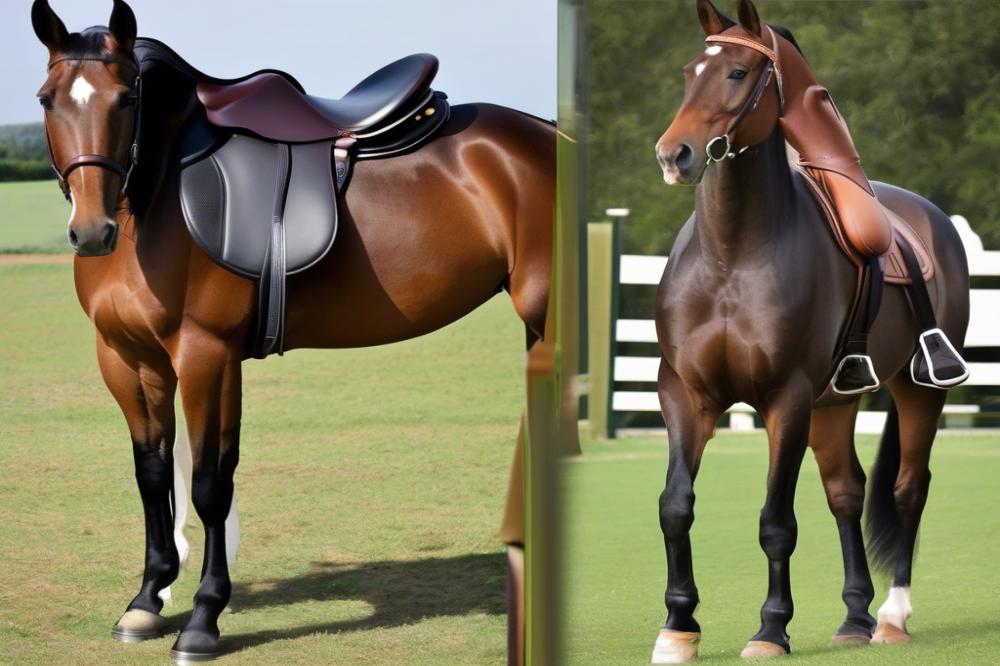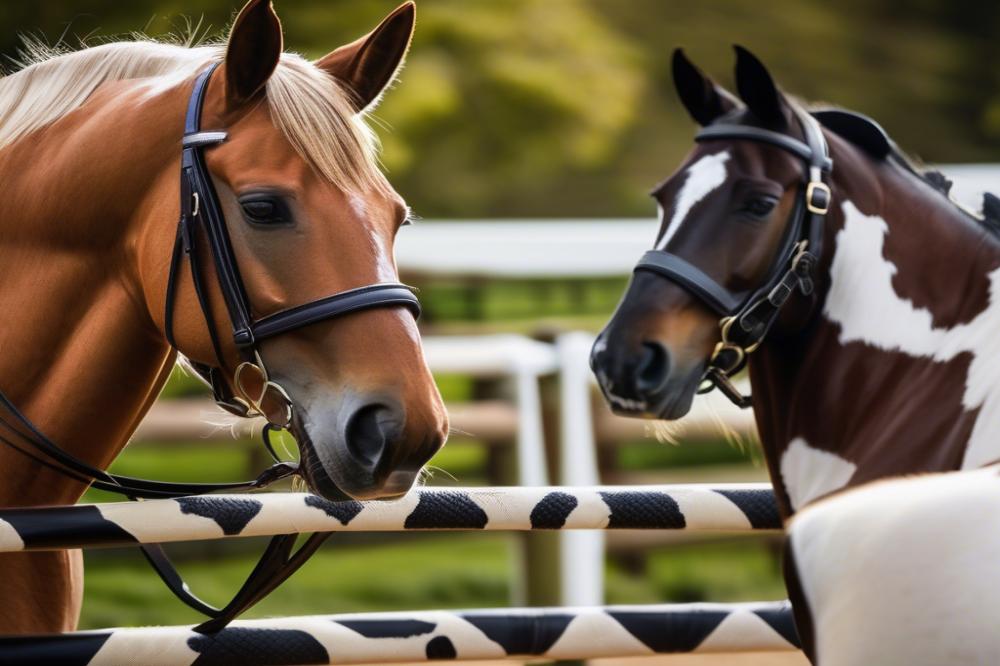Exploring The World of Horse Riding and Saddles
Horse riding is one of those activities that truly brings people and animals together. With the wind in your hair and the rhythmic movement of the horse beneath you, it’s easy to see why many people fall in love with this sport. Among the many aspects of horse riding, the choice of saddle stands out as being particularly important. This part of your horse riding gear can affect both your comfort and the animal’s performance.
Choosing the right saddle can feel a bit overwhelming, like trying to pick a favorite flavor of ice cream—there are just so many options out there! A well-fitted saddle not only supports the rider but is also crucial for the horse’s health and well-being. Imagine trying to run a marathon in shoes that are two sizes too small; you’d likely end up with blisters and not much joy. The same principle applies to saddles. Proper fit and function play a major role in horse care and horse training.
Understanding English and Australian Saddles
Among the various types of saddles, English and Australian saddles are two popular choices. Each brings its own style, flair, and purpose to the table. English saddles, known for their sleek design and often lighter materials, are often favored in disciplines such as show jumping and dressage. They allow riders to maintain a close contact with their horse, enhancing communication and responsiveness.
On the other hand, Australian saddles offer a more rugged and sturdy build. They are particularly beloved by those who enjoy trail riding or long-distance journeys across varied terrains. With a design that often includes features like a deep seat and flaps for comfort, these saddles can be perfect for long hours in the saddle. It’s like having a comfy couch when you’re settling in for movie night versus a stiff dining chair—comfort matters!
This article aims to dive into a saddle comparison between these two types, exploring the pros and cons of each. We’ll also touch on how they align with various equestrian techniques, revealing insights that can help riders make informed decisions. So whether you’re interested in breeds of racing horses or just want to trail ride through the bush while admiring the beautiful morgan colors, it’s clear that selecting the right saddle can make all the difference in your riding adventure.
Historical Background

Origins of the English Saddle
The English saddle can trace its roots back to the medieval period in Europe. Initially, it served a practical purpose during warfare. Knights rode with these saddles to gain security and control while mounted. Over time, this piece of equestrian equipment evolved. By the 17th century, it began to take on a sleeker design, perfect for hunting and light riding. Different styles developed based on specific riding needs. Riders needed something that allowed for greater movement. Comfort and functionality became key.
Development of the Australian Saddle
Now let’s hop over to the Australian saddle. This design emerged later, around the 19th century. It was influenced heavily by the demands of cattle herding. Picture the vast outback; it wasn’t just about elegance but durability. Australian riders needed a saddle that could handle long hours in the saddle. As horse riding gear, this saddle offers more stability and comfort during long treks. Its unique build features a wider seat and larger flaps, perfect for staying put while working with livestock.
Cultural Significance in Riding Styles and Disciplines
When considering saddle comparison, one must think about culture. The English saddle is often seen in formal disciplines like dressage, where precision is vital. Riders depend on the nuances of equestrian techniques for competitive success. Meanwhile, the Australian saddle shines in its own right. It dominates the rodeo scene and is a favorite among ranchers. For them, horse care and safety are crucial in everyday tasks. Both saddles represent more than just riding gear; they embody the traditions and lifestyles of their regions. Remember, each saddle tells a story. Whether it’s the grace of an English rider or the ruggedness of an Aussie cowboy, these historical designs shape our riding experiences today.
Design and Construction

Key features of the English saddle
English saddles are often sleek and stylish. They have a flat seat and no horns, which gives a rider a closer contact with the horse. This design allows for better communication between horse and rider. The flaps are usually long, providing protection for the rider’s legs. Most English saddles come with a choice of a knee roll, which gives additional support. Additionally, they tend to be lightweight, making them easier to manage.
Key features of the Australian saddle
On the other hand, the Australian saddle is a bit of a heavyweight champ in the world of horse riding gear. It typically has a deeper seat and higher cantle, which enhances comfort during long rides. You’ll often find a horn on these saddles, very handy for lassoing or balancing. The wide skirt design helps distribute the rider’s weight evenly, which is great for the horse’s back. This saddle often features extra D-rings for attaching gear, making it quite practical for outdoor adventures.
Materials used in both saddles
When it comes to materials, both saddles have their go-to choices. English saddles often use high-quality leather that is soft and supple, perfect for comfort. Synthetic options are also available, offering a lightweight alternative for the more budget-conscious rider. Australian saddles, however, tend to use thicker leather, which is durable and rugged. Sometimes they incorporate canvas or synthetic blends, especially in more affordable models. Quality equestrian equipment aims for durability and comfort, ensuring the best experience for rider and horse. Moreover, proper horse care includes maintaining these materials to avoid wear.
Riding Styles and Usage

When diving into the world of riding, one quickly realizes that English riding and Australian riding each have their own flair. Think of English riding disciplines like a dance. Jumping requires agility and precision, while dressage is all about grace and control. Riders wear fitted jackets and tall boots, creating a polished look. All that equestrian equipment is designed to support these stylish moves.
On the other hand, Australian riding emphasizes practicality. Stockmen use their saddles for days working cattle. These rugged cowhands need comfort and durability. Trail riding is another favorite, where riders explore beautiful landscapes. The saddle needs to be secure and supportive since riders may spend hours in the saddle. Some Australian saddles even have special features for added convenience, like deep seats or extra horns for holding gear.
Suitability is key when considering riding activities. English saddles excel in sports that require precise control. Riders benefit from the close contact they get with the horse. Your equestrian techniques can really shine during competitions. But in casual settings like trail riding? The English saddle might not be the best fit. Those long rides demand something more cushioned. That’s where Australian saddles come in handy.
For horse training, the choice of saddle can impact how well a horse adapts to different styles. A stockman’s saddle may help teach a horse to navigate tricky terrain. Meanwhile, an English saddle can assist in developing finer skills, like transitions in dressage. Each type of saddle offers its own advantages, making the saddle comparison a vital part of the horse riding gear discussion.
In short, each riding style tailors itself to different needs. Whether you prefer jumping around fences or wandering through trails, both types of saddles provide value. So, whether you’re in a competition or on a leisurely ride, pick your saddle wisely, and your horse will thank you!
Comfort and Fit
Rider Comfort
Rider comfort is crucial in horse riding. English saddles often feature a flatter seat, which can provide a different feel compared to the deeper seat found in Australian versions. Some riders appreciate the close contact an English saddle offers. Others prefer the extra cushioning of an Australian saddle, especially on long rides. Think about the type of riding you’re doing. Are you on a trail for hours or jumping over fences? That will definitely impact which saddle feels better for you.
Fit for the Horse
Next on our journey is how each saddle fits the horse. Horse anatomy is important here. An English saddle tends to have a narrower tree, which can suit certain horse types well. However, it might not be great for wider horses. An Australian saddle has a broader tree, allowing it to better accommodate more horse shapes. Consider the withers and back of your horse when making this decision. A saddle should follow the natural curves without pinching or creating pressure points.
The Importance of Proper Saddle Fit
Proper saddle fit is a matter of horse care. If a saddle doesn’t fit well, both horse and rider will face troubles. An improperly fitted saddle can lead to sore backs, making riding uncomfortable or even painful. Even the best equestrian equipment is useless if it doesn’t fit right. It’s like wearing shoes too tight or too loose. You wouldn’t enjoy a long walk in uncomfortable shoes, would you? In horse training and riding, comfort leads to better performance and happier horses. It’s all about creating a positive experience for both you and your equine partner.
Performance and Functionality
Performance Aspects of the English Saddle
The English saddle is popular among riders who enjoy jumping and dressage. This style of saddle allows for close contact with the horse, which is important for communication. Riders can feel every little movement, making it easier to apply subtle cues. The design often includes a flat seat and higher pommel, which helps the rider stay balanced during quick maneuvers.
Additionally, the lightweight materials make it easier to handle. Riders often find that they can maintain a better position in the saddle. This aspect is crucial for equestrian competitions, where precision is key. However, some may find the lack of a horn or cantle limiting for trail riding.
Performance Aspects of the Australian Saddle
On the other hand, the Australian saddle is built for control and comfort, especially during long rides. The deeper seat and larger knee rolls offer more security when riding over rough terrain. It also features a horn, which is great for securing tools or your balance on steep inclines.
This saddle’s versatility shines when it comes to horse care during various activities. Whether you’re herding cattle or exploring new trails, it performs admirably. Riders enjoy the stability it provides, which can sometimes feel like sitting inside an armchair. The downside? Some may find it heavier and bulkier compared to its English counterpart.
Advantages and Disadvantages in Various Riding Scenarios
In jumping events, the English saddle often takes the lead. Its design allows for fluid movements, making it easier to jump higher and clear obstacles. However, take it out for a long trail ride, and riders might prefer the Australian saddle instead. The comfort offered during extended rides can’t be overstated.
When it comes to equestrian techniques, both saddles have their own merits. English saddles excel in riding stability, but they may not hold up as well in tough outdoor conditions. Meanwhile, the Australian saddle’s ruggedness shines when working with livestock or navigating uneven landscapes.
Choosing the right horse riding gear often boils down to personal preference. Some riders love the streamlined feel of the English saddle, while others appreciate the support and security of the Australian style. It truly depends on what fits your riding lifestyle best.
In the end, the saddle comparison is a matter of taste, riding goals, and experience. Each offers distinct features that suit different scenarios. Whether it’s agility in the show ring or comfort on the trail, both types can enhance horse training experiences.
Care and Maintenance
Maintenance Requirements for English Saddles
English saddles may appear sleek and straightforward, but caring for them is essential. Basic cleaning involves wiping down the leather after each ride. A damp cloth works well to remove dirt and sweat. Some riders use saddle soap occasionally, which helps keep the leather soft and pliable. A good quality conditioner is a must for longevity. Proper conditioning prevents the material from cracking over time.
Regularly checking the girth and stirrup leathers is important too. Look for any signs of wear or damage. Sometimes, a stitch might come loose. Fixing these issues promptly can save you from bigger problems later. Remember, all this care doesn’t just prolong the saddle’s life; it also affects your comfort while riding.
Maintenance Requirements for Australian Saddles
Australian saddles have their own unique needs. These saddles often come with added accessories, such as a breastplate or a saddle blanket. Cleaning these parts can be a bit more involved. After riding, remove any dirt, and check the stitching and buckles. Enjoy a routine of conditioning the leather as well, especially after muddy or rainy rides.
Inspecting the saddle’s components helps prevent accidents. There’s nothing worse than a faulty strap when you’re out on the trail! Australian saddles tend to have more bulk, which means they may need a bit more elbow grease. However, that extra effort pays off in durability.
Longevity and Durability Considerations
When it comes to deciding on a saddle, think about how long you want it to last. English saddles typically boast an elegant design, but they may not always withstand rough handling. If you’re into extensive horse training or adventurous riding, go for tough, high-quality materials. Many riders find that investing in protective gear pays dividends later on.
On the flip side, Australian saddles are typically built to endure tough trails and varied conditions. The materials used can often withstand the wear and tear of outdoor adventures. It’s not uncommon for riders to pass down these saddles through generations. However, both types of horse riding gear deserve regular check-ups for optimal performance.
Ultimately, investing time in maintenance enhances the lifespan of your equestrian equipment. After all, a well-cared-for saddle can make all the difference in your riding experience. So, keep those saddles clean, check their parts, and they will serve you well.
Cost and Availability
The price range of English and Australian saddles can be quite different. Generally, an English saddle may cost anywhere from $400 to $3,000. This wide range depends on factors like brand and materials. On the other hand, an Australian saddle usually starts around $700 and can go up to $5,000. The higher prices often reflect the craftsmanship involved.
Saddle availability in stores and online can also differ. English saddles are popular and can be found in many equestrian shops and major websites. Australian saddles might not be as easy to locate outside of specialty stores. For some, this means looking into online options more often. Certain retailers may offer both styles, but it’s good to check their stock regularly.
Several factors can influence how much you will pay for these pieces of horse riding gear. First, the materials make a big difference. Saddles made from high-quality leather often carry a heftier price tag compared to synthetic options. Additionally, brand reputation can hit your wallet hard. You might pay extra for a name that’s recognized in horse training circles. Style plays a role too. Some folks prefer a basic design, while others go for intricate details that can increase cost.
Wrapping It Up
When it comes to choosing between an English saddle and an Australian saddle, there are some key differences to keep in mind. English saddles are typically lighter and have a closer contact with the horse, which many riders appreciate for disciplines like jumping or dressage. On the flip side, Australian saddles offer more support and security, often featuring higher cantles and wider flaps that cater to long rides or rough terrain. Each saddle type shines in its own arena, making the choice largely about your riding style and goals.
Thinking about your needs is crucial. If you’re into compact riding or participating in competitive events, an English saddle could be your best buddy. You’ll likely feel more in tune with your horse, which is great for communication. However, if you foresee adventurous trail rides or require a bit of extra stability, an Australian saddle might just fit the bill. They were designed for versatility and comfort, making long rides with draft horses a breeze. Imagine riding through the bush or along a river, feeling secure in your saddle with every bump and turn.
Ultimately, the best saddle is the one that makes you and your horse happy. Remember to consider both your horse’s size and your own preferences when selecting a saddle. Maybe you’re petite and prefer a lighter saddle, or perhaps you’re a seasoned rider who knows the importance of proper horse hand measurement. It’s all about comfort and fit—not just for you, but for your horse, too. After all, the right saddle can turn a good ride into a great adventure, while the wrong one can lead to discomfort for both rider and equine partner.
So, before you trot off to make a choice, take some time to reflect. The saddle you select should match your unique riding style and the special needs of your horse. Whether you ride to compete, explore, or just enjoy the outdoors, make sure you’re both ready for the journey ahead!



